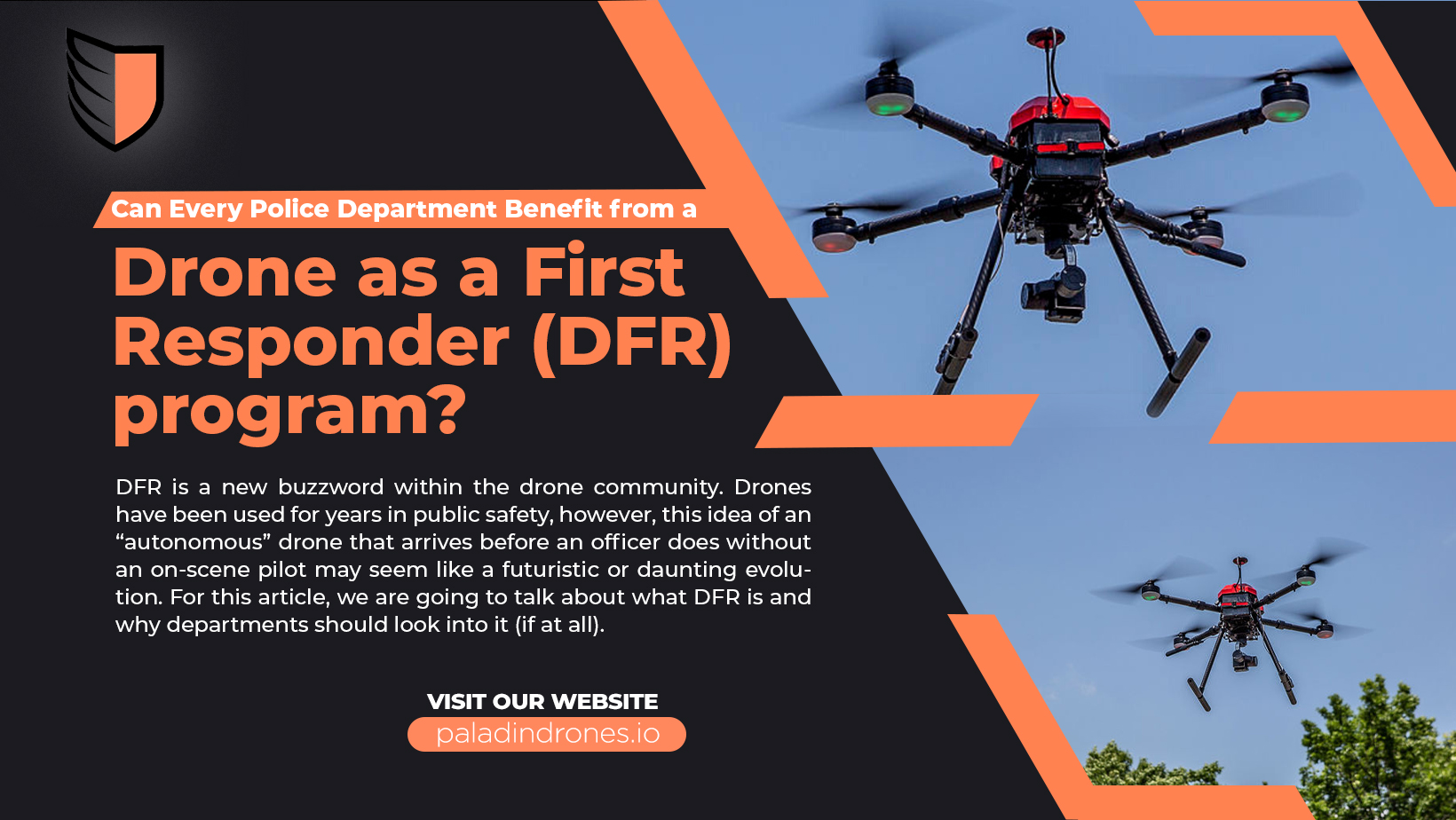DFR is a new buzzword within the drone community. Drones have been used for years in public safety, however, this idea of an “autonomous” drone that arrives before an officer does without an on-scene pilot may seem like a futuristic or daunting evolution. For this article, we are going to talk about what DFR is and why departments should look into it (if at all).
How are Drones Currently Used in Police Departments?
Using Drones For Situational Awareness
Drones have a few obvious benefits that have improved situations in policing. For example, a SWAT team could go through the front door and adapt to what they encounter or they could launch a UAS and gather information before entry. A search and rescue (SAR) mission can be conducted by a K-9 unit and a dozen sworn officers or a UAS could scan a large amount of land in less time.
Here is an important note: while a drone can use a thermal to comb a forest, can just a thermal camera penetrate the trees to see the ground floor? Does it have enough range or battery life? Drones are not a substitute for officers in public safety nor is Drone as a First Responder. Both a UAS and using it in a DFR model are tools that assist our first responders by giving them more data to make effective decisions.
What is the process for getting a UAS on the scene?
The physical UAS and the response time of the trained pilot are the deciding factors. Once a call is received, a unit is dispatched. Whoever arrives on the scene is the first responder. Does that officer have a UAS in their unit? If yes, can they deploy it immediately? Some departments will allow officers to deploy the UAS to get information instead of getting to the scene immediately, however almost all will specify that you are a first responder before a UAS pilot and must act accordingly. It could be 20 minutes before officers are able to get a UAS overhead to gather mission critical information.
How Does DFR Improve on this model?
1. Situational Awareness Before the Police Arrive
First responders need to remain safe during their service to the community. Unfortunately, public safety workers often respond to an accident quickly, putting their safety at risk.
Paladin’s Watchtower software allows the first responder to deploy the Knighthawk with a single tap and see its live video feed. We have eliminated the need for the pilot and UAS to be on scene before launching the UAS which drastically reduces the UAS response time and allows for it to arrive on scene quickly.
When a 911 call comes in, Watchtower dispatches Knighthawk to the emergency site.
2. Resource Allocation Planning
Many departments around the country are understaffed and as a result, the CAD queue begins to pile up with unanswered calls for service. For example, there was a fender bender. Officers on shift are tied up searching for a missing person and cannot respond for 30 minutes to an hour. Should a patrol car leave the search for the missing person after an hour to respond to the minor accident? Are the cars still there? Is someone still needed? With a DFR program, you can get eyes on the scene to assess whether a response by an officer should become a priority or if the scene resolved itself.
Should your department consider DFR?
- Are you understaffed?
- Are you in a high crime area?
- What is the size of your city?
Are you Understaffed?
Drone as a First Responder is the ultimate force multiplier. It can provide a live video feed of a 911 call. Officers can gather critical intel on the scene before arriving. With streaming, other first responders can monitor the scene and assess whether more backup is needed.
Are you in a high crime area?
There are two massive benefits to a DFR program in high crime areas. The first is the situational awareness gained by the live video feed which can help save lives. The second is the deterrence factor. With DFR, departments are able to broadcast to the community and surrounding areas that they can have eyes on any crime within 2 minutes. Once the program starts yielding results, criminals may think twice before entering your community.
What is the size of your city?
Paladin utilizes LTE to be able to reliably cover miles of land with a single UAS. We set a three mile radius from a drones homebased which optimizes response time and makes DFR much more cost effective.
If you have a smaller city, do you need LTE? Yes. With radio-based drones, the connection relies on the remote controller pointing at the UAS. This requires a remote pilot in command to be stationed outside on a rooftop in order to have a DFR program. With LTE, the PIC can pilot the UAS from inside a building.
DFR is about making our communities safer.
First responders are required to act quickly according to a rough action plan based on the limited information they know in harsh and dangerous working conditions. Drones could never replace the decision making abilities of a trained officer. Drones as a First Responder is designed to give trained officers a live video feed where they can make their own assessment and go into a situation more prepared.
Learn more about how Paladin can help you to be response-ready with emergency response solutions.

